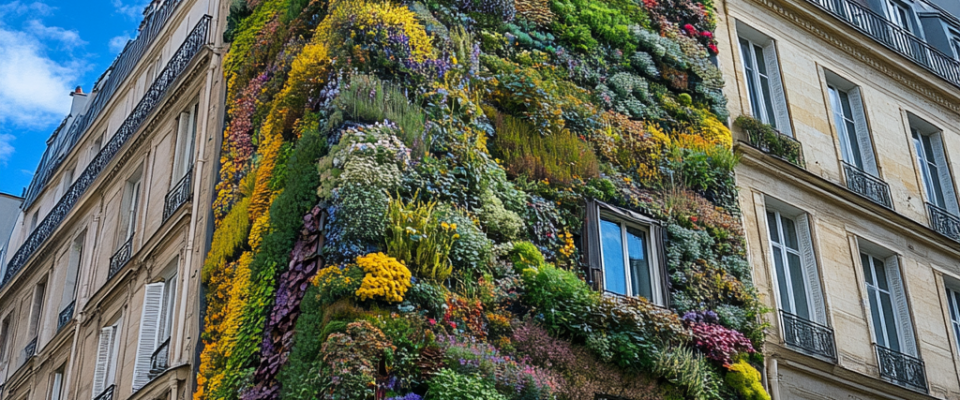Vertical gardens are an innovative solution for urban greening where land space is limited. They are structures covered with plants that are mounted on building facades, walls or other vertical surfaces.
Today, vertical gardens are becoming not only a way to improve the appearance of the city, but also a significant tool in the fight against air pollution, increasing humidity levels and creating a comfortable urban environment. These projects are attracting the attention of architects and urban planners around the world, shaping new approaches to sustainable development.
History of vertical gardens and their development in cities
The history of vertical gardens dates back to ancient times. One of the first examples can be considered the Hanging Gardens of Babylon – the legendary wonder of the world. In the Middle Ages, grapes and ivy were used to decorate the walls of castles and manors, creating natural “green facades”.
The modern round of development of vertical gardens began in the 20th century, when French botanist Patrick Blanc developed the concept of “green walls”. His approach became the basis for the creation of vertical gardens that combine aesthetics and functionality. Since then, the technology has been actively used in cities around the world, turning concrete jungles into living ecosystems.
Advantages of vertical gardens for ecology and urbanism
Vertical gardens have many advantages that make them an important part of the modern city:
- Air purification: Plants absorb carbon dioxide and release oxygen, which improves air quality.
- Temperature reduction: Green walls reduce the heating of buildings, creating a natural cooling effect.
- Noise insulation: Plants absorb noise, reducing sound pollution in cities.
- Aesthetics and psychology: Green facades make cities more attractive and have a positive effect on people’s mental health.
- Energy Saving: Vertical gardens reduce energy consumption for air conditioning.
These benefits make vertical gardens an integral part of the sustainable city concept.
Popular technologies for creating vertical gardens
Vertical gardens are created using various technologies that adapt to climatic conditions and available space:
- Modular panel system: plants are planted in modules that are mounted on the walls. This technology is popular due to its ease of installation and maintenance.
- Hydroponic systems: Plants grow on a special base without soil and receive nutrients through water.
- Cascade designs: Using tiered pots or containers to grow plants vertically.
- Moss walls: a special type of vertical garden, where the basis is made up of mosses and lichens that do not require complex care.
- Integrated irrigation systems: Automatic watering via built-in pipes, making plant care easy.
Each technology is selected depending on the project’s goals and available resources.
Examples of successful vertical garden projects in the world
One of the most famous projects is Museum of Tomorrow (Museum of the Future) in Rio de Janeiro. Its facade is decorated with vertical gardens, which not only add aesthetics but also purify the air in the area.
Another striking example is the building One Central Park in Sydney. Its facades are covered with plants that create a microclimate and reduce energy consumption. Project in Singapore Gardens by the Bay has become a symbol of the city: vertical structures combine aesthetics with a high-tech approach to environmental design.
These examples are inspiring cities around the world to incorporate green technologies into their spaces.
The future of vertical gardens
Vertical gardens have huge potential for further development. They help solve environmental problems by adapting cities to climate change. Advances in automation technologies such as irrigation control systems and plant health monitoring are making projects more accessible and efficient.
However, there are a number of challenges, including high installation costs and the difficulty of maintaining large structures. For the successful dissemination of this technology, the introduction of more accessible materials and methods is necessary. However, the popularity of vertical gardens continues to grow, making them a key element of future green cities.
Vertical gardens are not just a trend, but an important step towards creating sustainable and comfortable cities. They combine aesthetic appeal with practical benefits, improving quality of life and maintaining environmental balance.
By investing in green projects, we make cities more harmonious, bringing nature into them even where there seems to be no place for it. Vertical gardens are a bridge between man and nature in an urban future.
Yes, there are many space-saving solutions such as modular panels or potted structures that are easily adaptable to small spaces.
Typically, low-maintenance plants such as ferns, succulents, ivy or mosses are chosen as they easily adapt to vertical gardening conditions.

